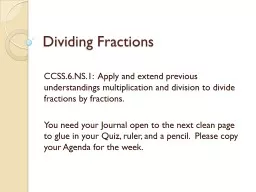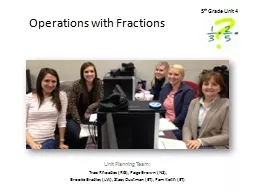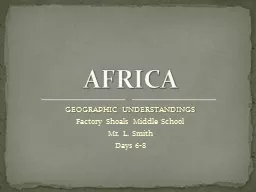PPT-Dividing Fractions CCSS.6.NS.1: Apply and extend previous understandings multiplication
Author : aaron | Published Date : 2018-10-04
You need your Journal open to the next clean page to glue in your Quiz ruler and a pencil Please copy your Agenda for the week Bar Models and Number Lines Using
Presentation Embed Code
Download Presentation
Download Presentation The PPT/PDF document "Dividing Fractions CCSS.6.NS.1: Apply a..." is the property of its rightful owner. Permission is granted to download and print the materials on this website for personal, non-commercial use only, and to display it on your personal computer provided you do not modify the materials and that you retain all copyright notices contained in the materials. By downloading content from our website, you accept the terms of this agreement.
Dividing Fractions CCSS.6.NS.1: Apply and extend previous understandings multiplication: Transcript
Download Rules Of Document
"Dividing Fractions CCSS.6.NS.1: Apply and extend previous understandings multiplication"The content belongs to its owner. You may download and print it for personal use, without modification, and keep all copyright notices. By downloading, you agree to these terms.
Related Documents














